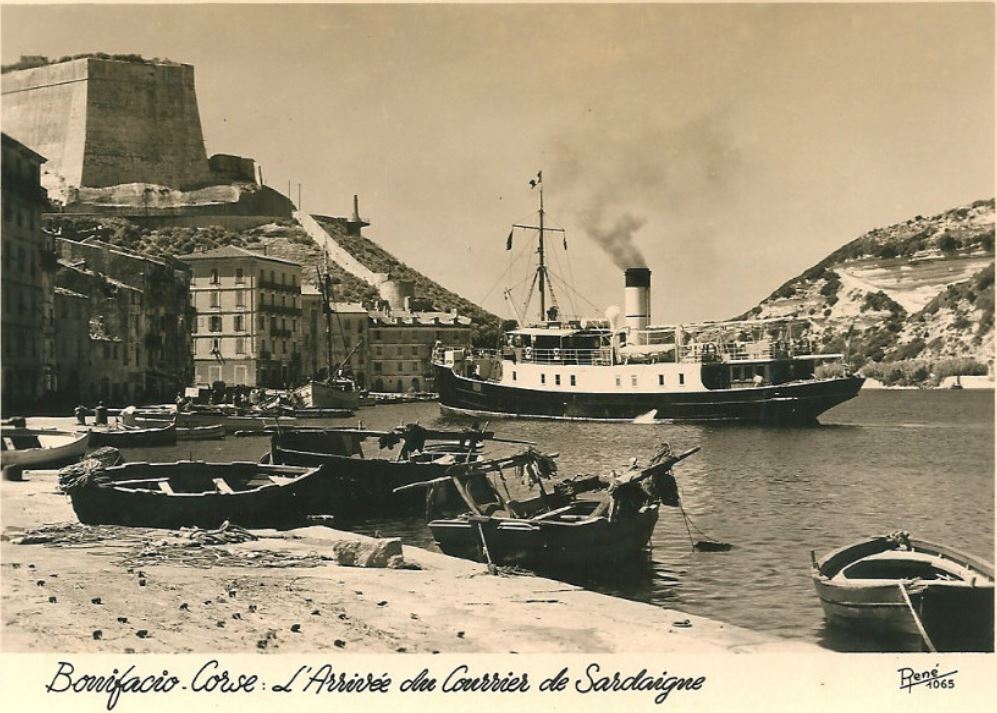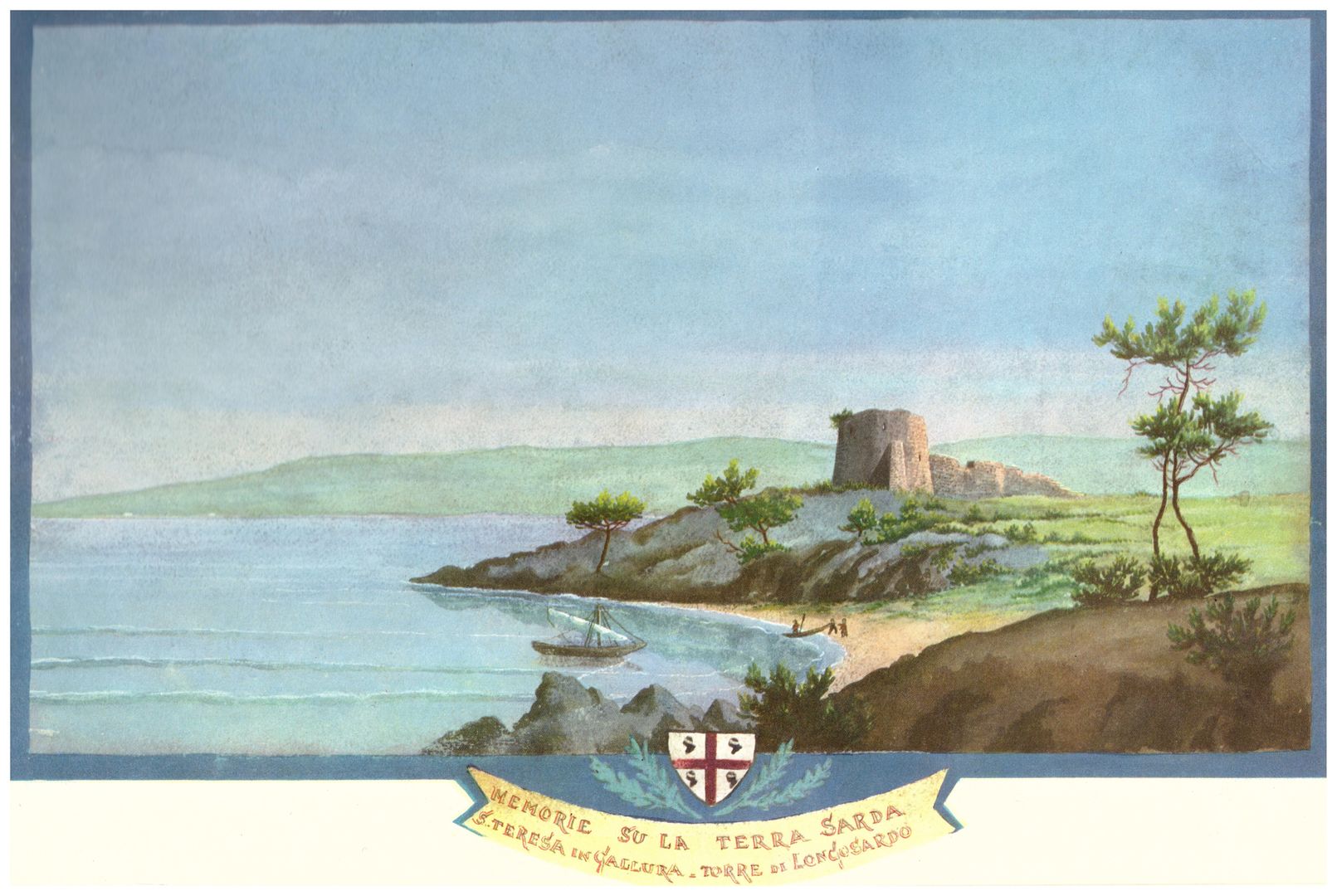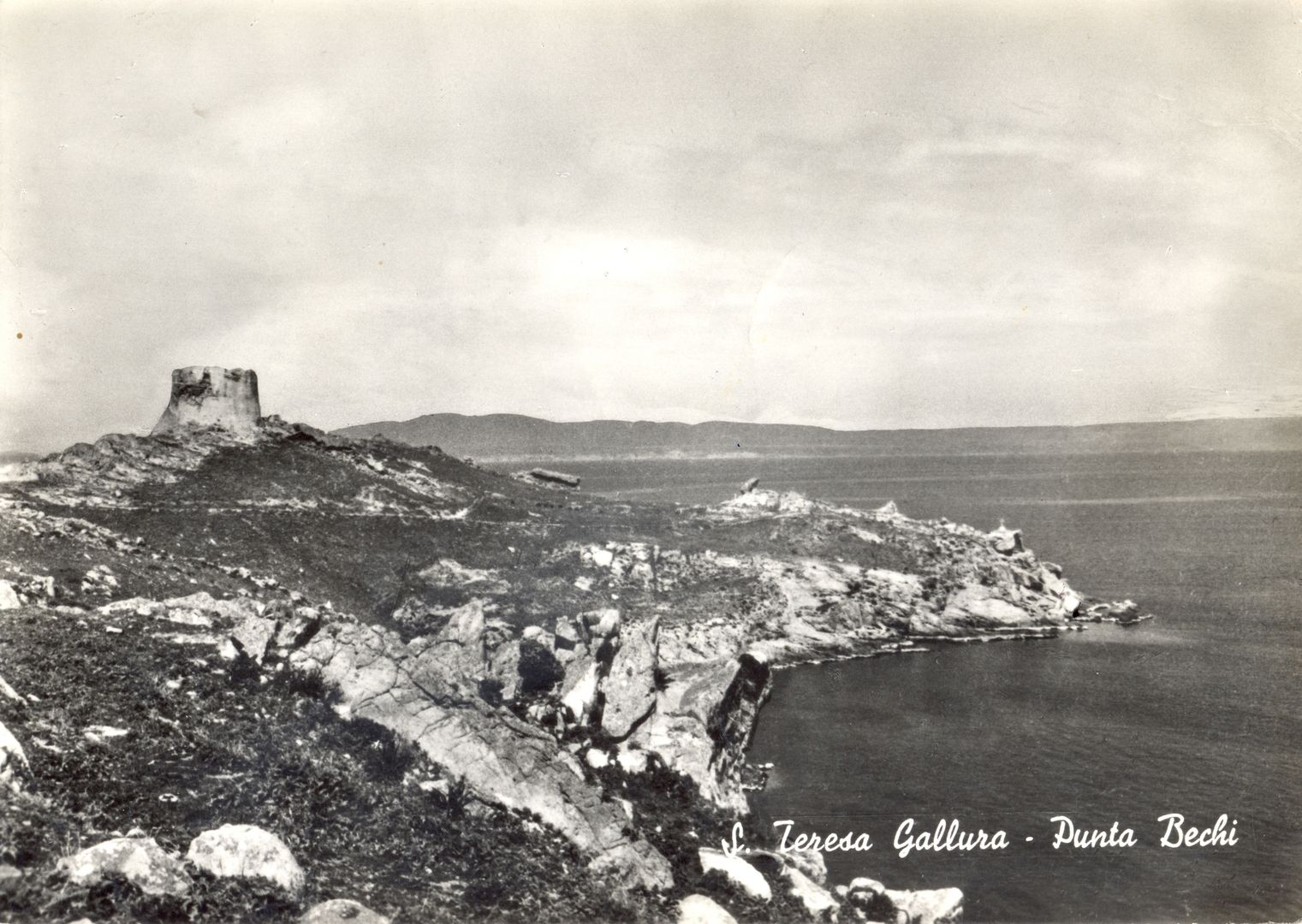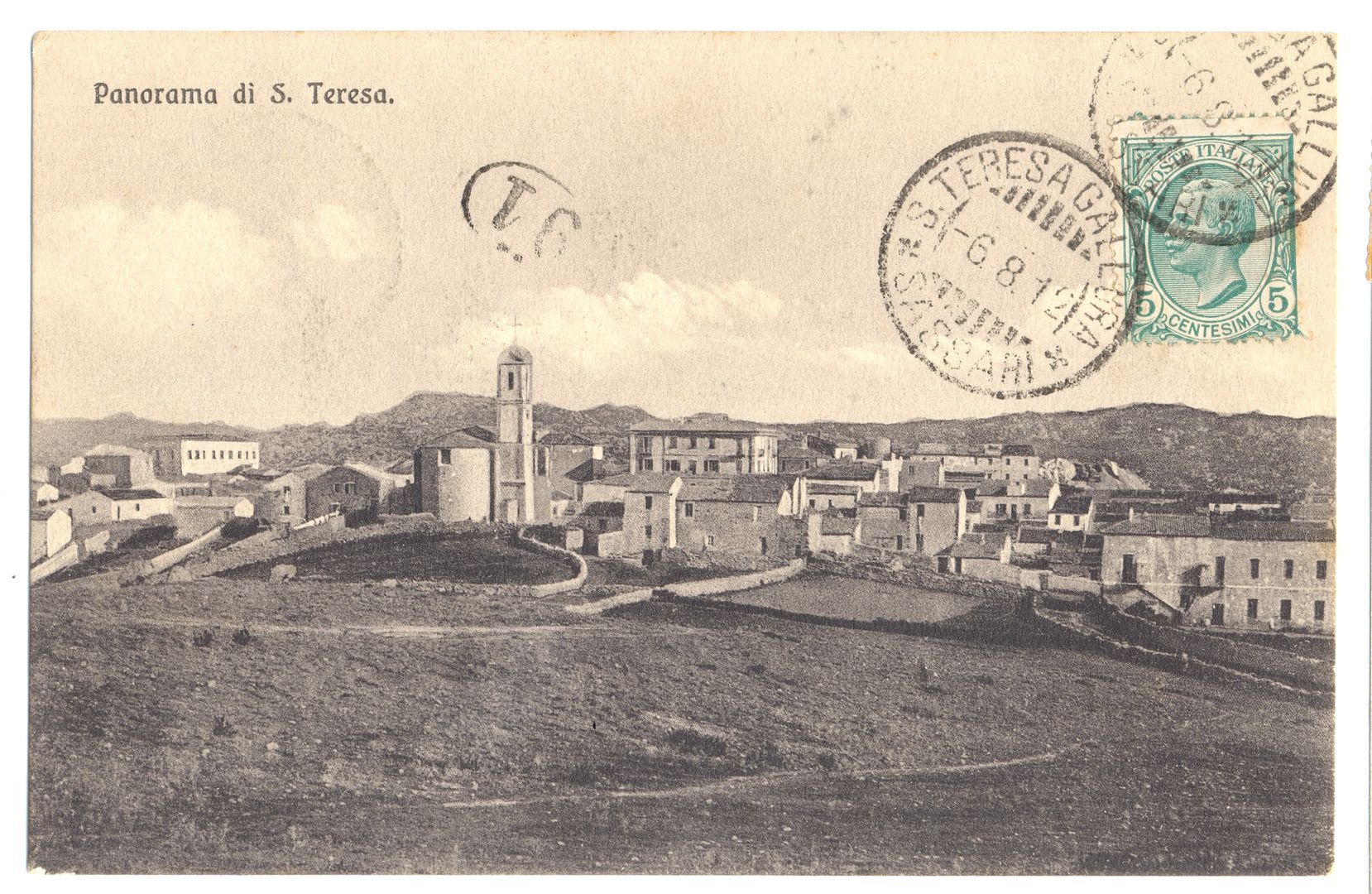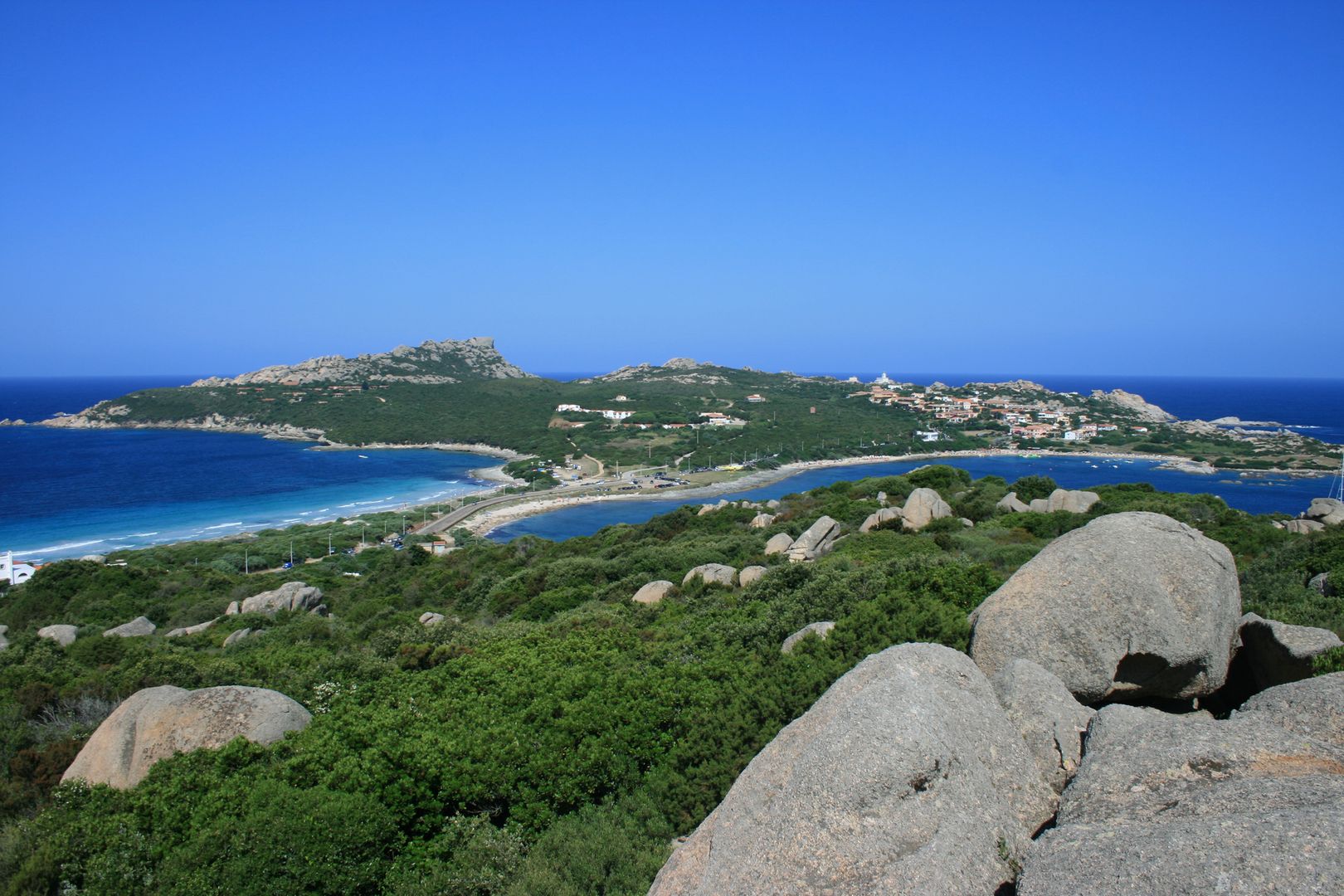SANTA TERESA GALLURA
by George Burdett
Traits of Corsican and Sardinian Character
in «The New Monthly Magazine and Humorist» ⇒
London, January – February 1845
I must now take leave of Corsica (for the mass of whose inhabitants I feel great regard), and pass over to the opposite coast of Sardinia, which is scarcely less deserving of attention.
Bomjacio [sic], the nearest town to the Sardinian shore, is a fortified place of some strength, perched on a chalk cliff, and commanding the harbour, which is very narrow-in fact, not more than three hundred yards across.
When seen from the sea, the cliffs appear like those of Dover. Like all the other sea-port towns in Corsica, except Bastia, it “rots itself at ease on Lethe’s wharf.”
The padrone of a felucca, about as large as a man-of-war’s launch, was about to return to Sardinia, and with him I engaged for a passage to Lungo Sardo for fifty francs.
An order had been given by the Prefect of Corsica, that no one should leave the island without having his pass-port signed at Ajaccio. To have obeyed in this matter would have en-tailed upon me at least five days’ loss of time, so to avoid the difficulty, I had recourse to various public functionaries, beginning with the Adjoint du Maire, and ending with the Sardinian Vice-consul.
The latter at last consented to enter my servant and myself on the felucca’s books as sailors working their passage across ! All obstacles having at length been smoothed, we went on board in force, sçavoir, Ferdinand and the three dogs, my shooting pony, the Pilgrim, and myself. The Pilgrim walked into the felucca as steadily as one of Nelson’s quartermasters, and braved without flinching, and without the indignity of strapped legs, a short sea and a head wind which made all the dogs sea-sick.
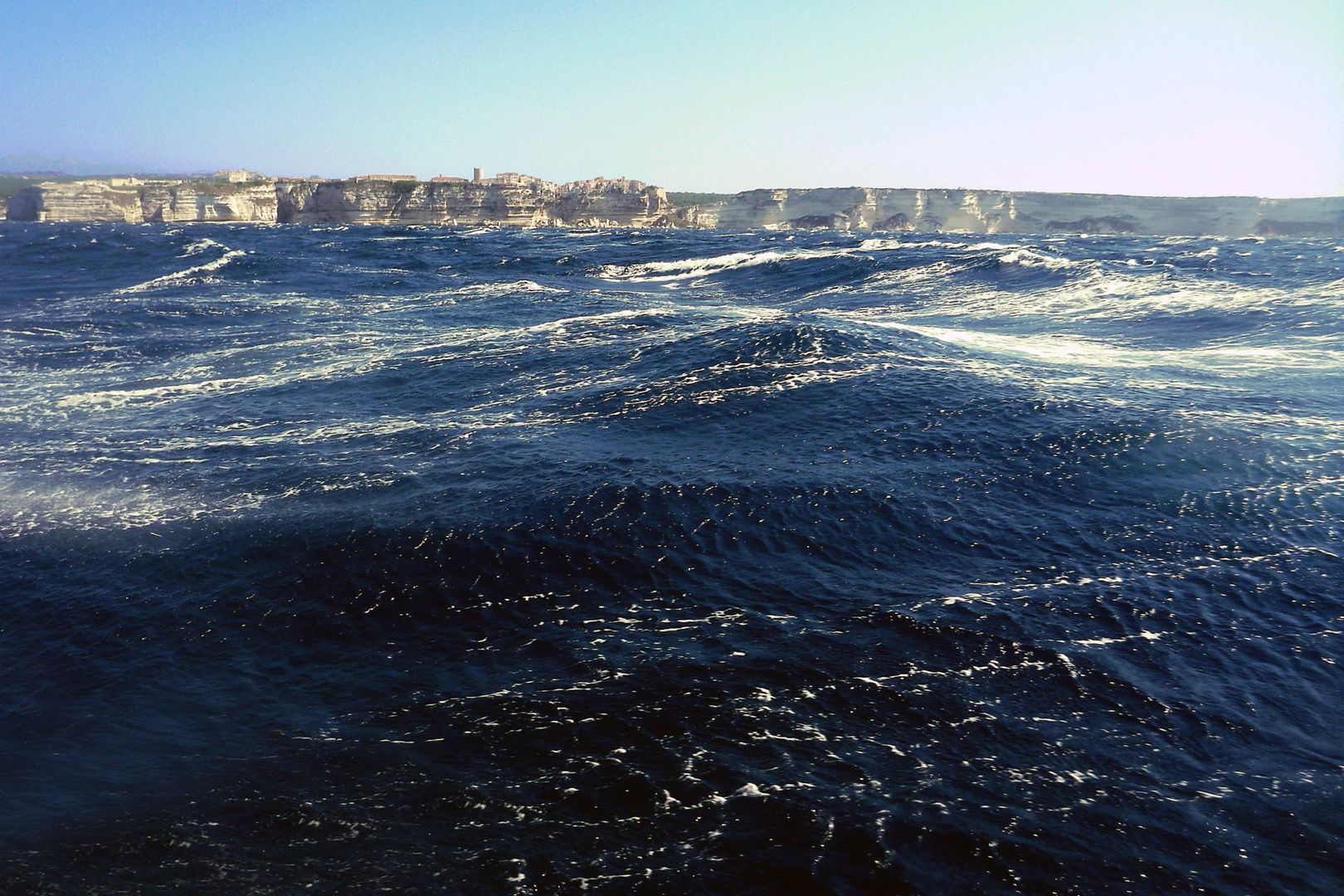
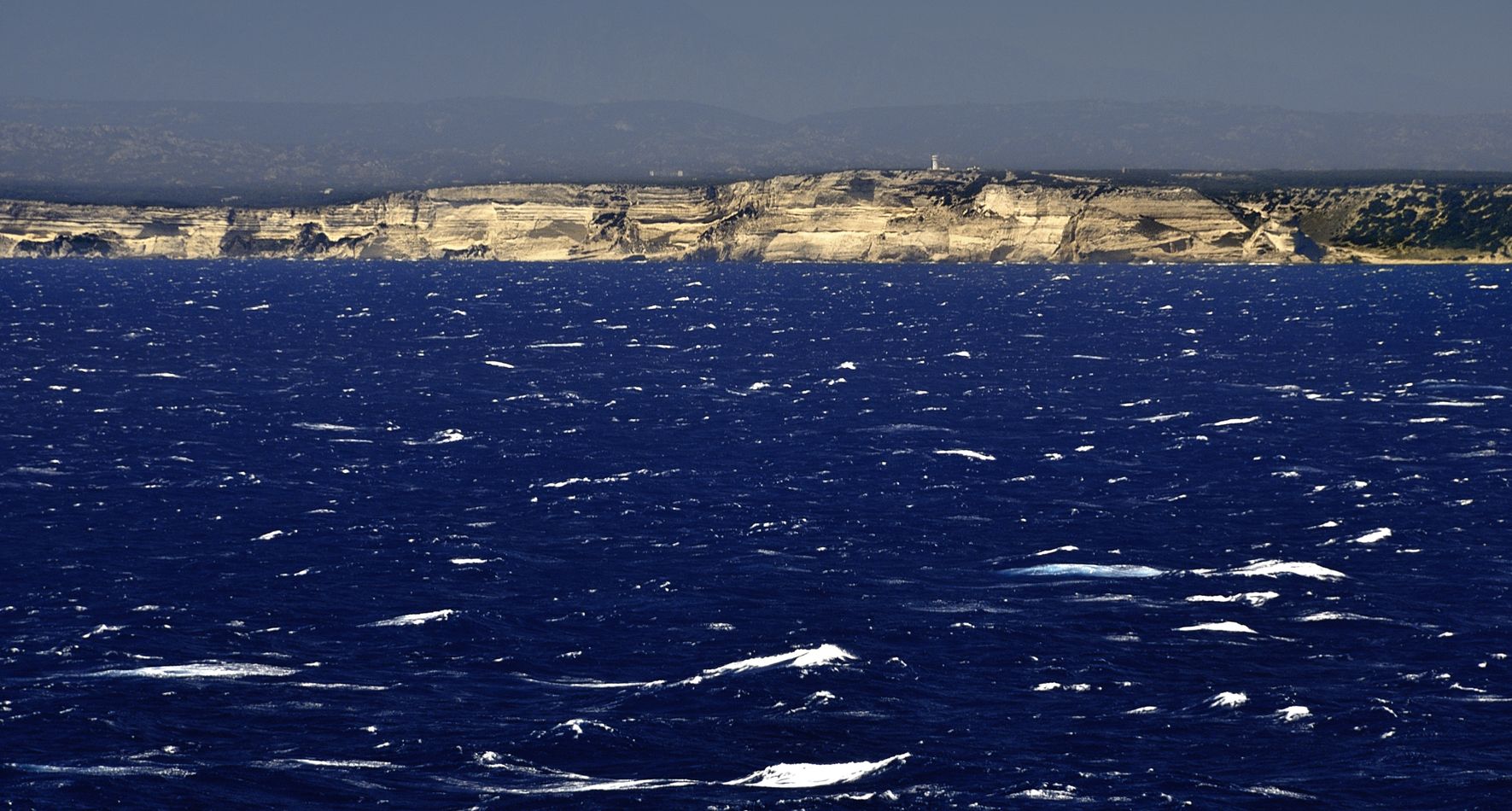
The distance between Bomjacio and Lungo Sardo was done by us in about a couple of hours. The nuisance of the custom-house is in all countries greatest where their commercial prosperity and resources are at the lowest ebb. Sardinia is dying of inanition, and there is more trouble in the clearing out for one unfortunate felucca passenger at Lungo Sardo, than for the living freight of half-a-dozen three hundred-horse steamers in “the Pool.”
My troubles began with gunpowder. I wore a pound of this useful material about my person, and my saddle-bags contained another pound of English diamond, the whole being, as I afterwards found out, contraband; besides, I was liable to be imprisoned for carrying on shore of these munitions of war in my pockets.
As soon as we had landed, we were allowed by some oversight to walk up to the house of the padrone, into whose nuptial bed I poured my stock of French powder, thus getting over some of my difficulties, but the greatest were yet behind. I then returned to the beach, and was searched in due form, but the rich prize was gone.
The night was spent in a wretched hovel, and the next morning I repaired at eight o’clock to the custom-house, together with my friend, the padrone, as bottle-holder.
In due time the delinquent flask of diamond grain made its appearance, and was set aside with a solemn stillness that boded the worst consequences.
The search being over, and the duty on my horse, guns, &c. paid, I determined to make a last rally for the cherished dust. Accordingly I addressed the receiver in a set speech, in which I condemned all custom-house regulations in general, and those of Sardinia in particular, adding, nevertheless, that the bitterness of the pill was very much diminished by his courtesy and kindness, which was really the case cluded by urging the impossibility of any Englishman’s coming to Sardinia, except to shoot, “and then, Signor Recevitore, how can one shoot without English powder?”
This appeal was irresistible, as the ceiver had probably found to his cost. My powder was returned to me with a graceful wave of the hand, and an offer of a few charges refused with a sigh, which revealed the greatness of the sacrifice.
The next day I agreed with a viaggante, or pack-horse carrier to take Ferdinand and my baggage to Sempio, for twenty-four reals (twelve francs), for which sum two horses were to be forthcoming.
Our friend, the viaggante, however, with true Punic faith, brought only one to the post in the morning, the other was said to be knocked up and unable to travel.
The one, which appeared at the door accoutred, had a saddle which bore strong marks of eastern origin, very high in the pummel and cantle, and with barely room for the horseman. To this, the cloth saddle-bags of the country were strapped on, and, like Grimaldi’s breeches pockets swallowed up every thing that was thrown into them; one by one disappeared, bag after bag, valise after gun-case, and barrel-case after rollers and cloaks, till the bloated monsters almost trailed their length on the ground.
On this foundation Ferdinand was hoisted up, but the temple of leather was destined to have another pinnacle besides himself.
SOURCES OF THE ILLUSTRATIONS
19th century drawings, paintings and lithographs
Philippine La Marmora, Santa Teresa, 1854-1856, IN Luigi Piloni, Memorie sulla terra sarda: tempere inedite di Philippine de la Marmora (1854-1856), Cagliari, Fossataro, 1964
Postcards and photos from the late 19th and early 20th century
Collection Navi e Armatori, Archivio storico comunale di Santa Teresa.
Contemporary photos
Patrick Nouhailler, Fabrizio Fusari
SANTA TERESA GALLURA and CAPO TESTA (Sardinia)
© ALL RIGHTS RESERVED

